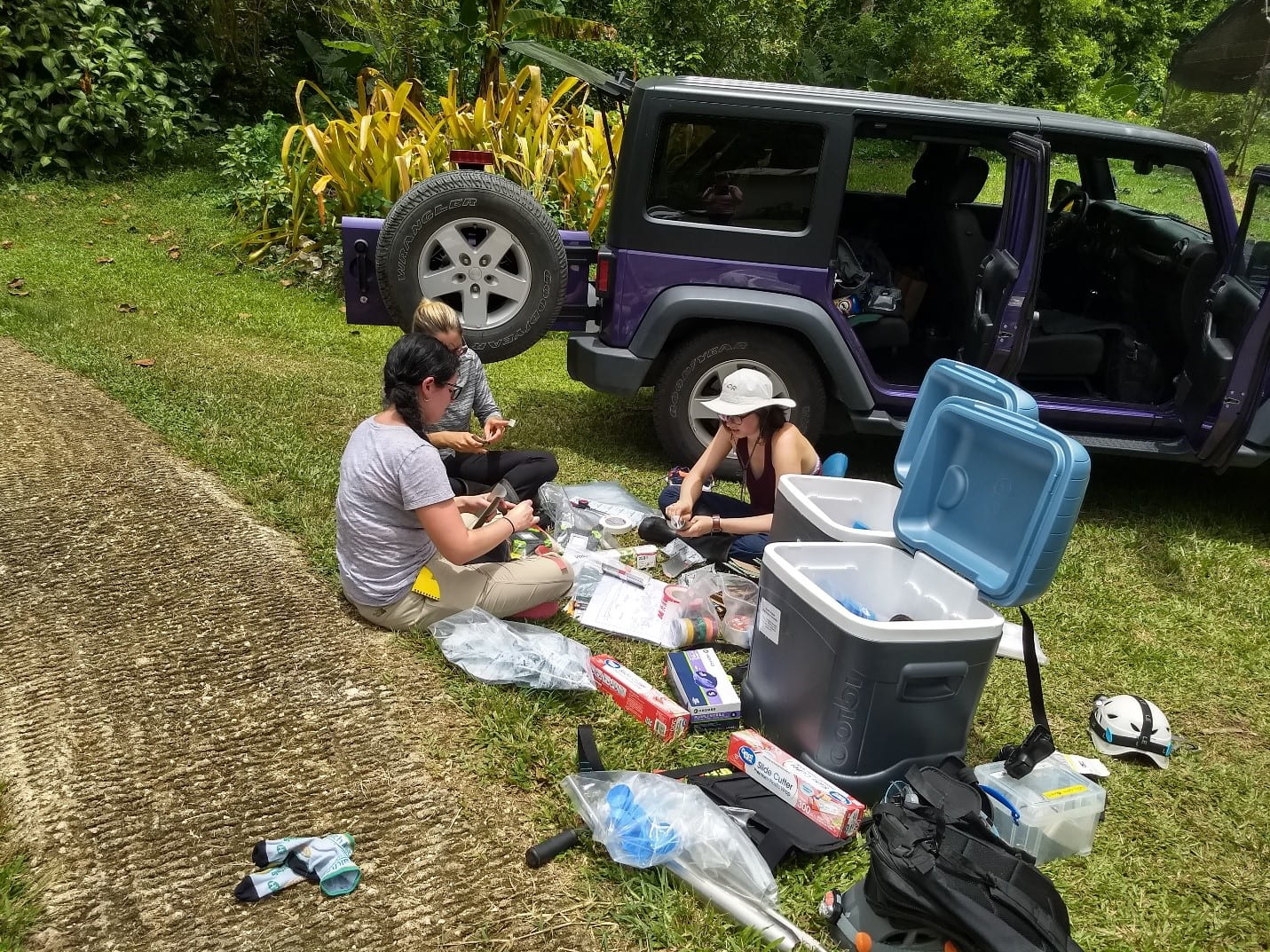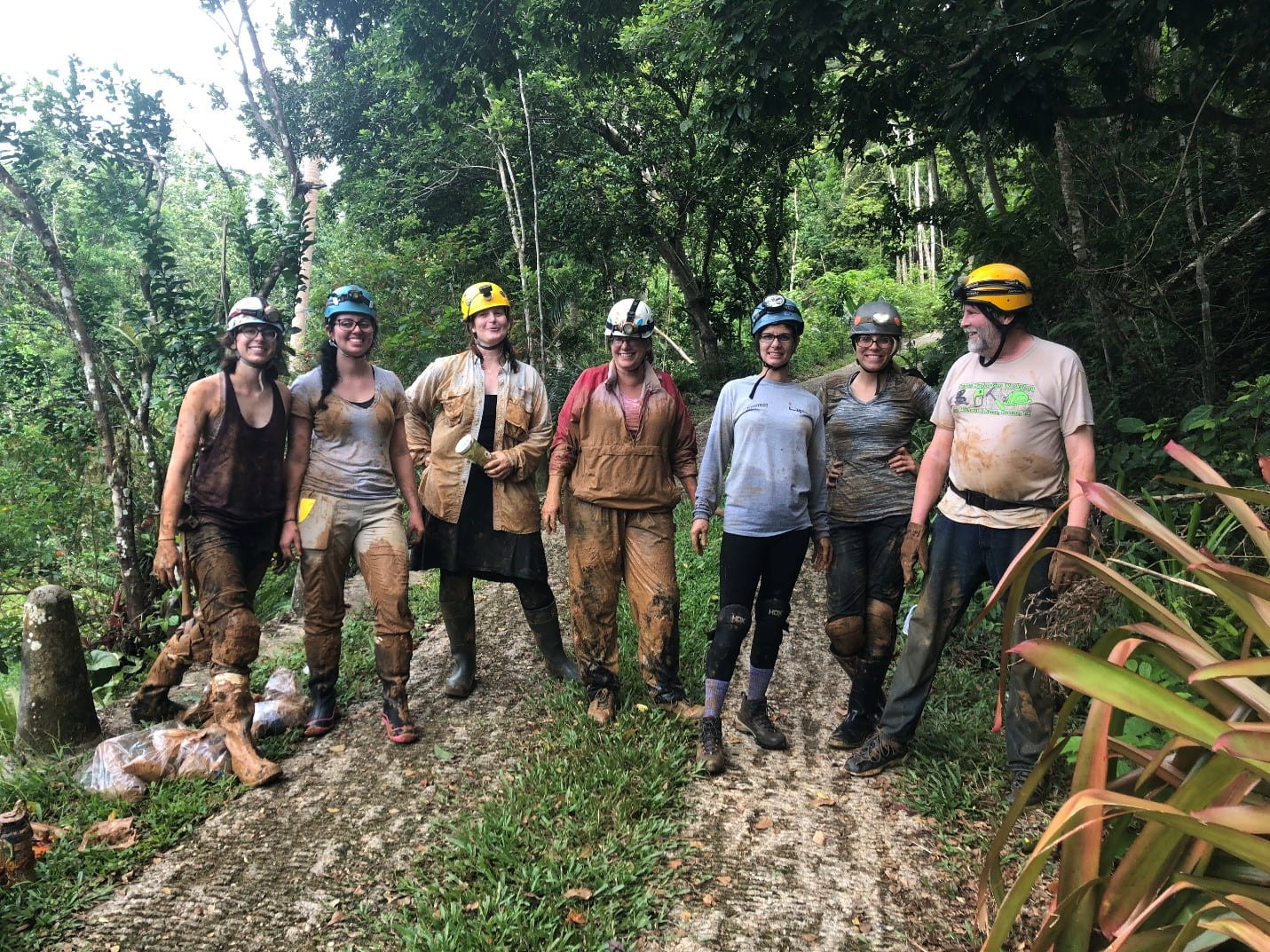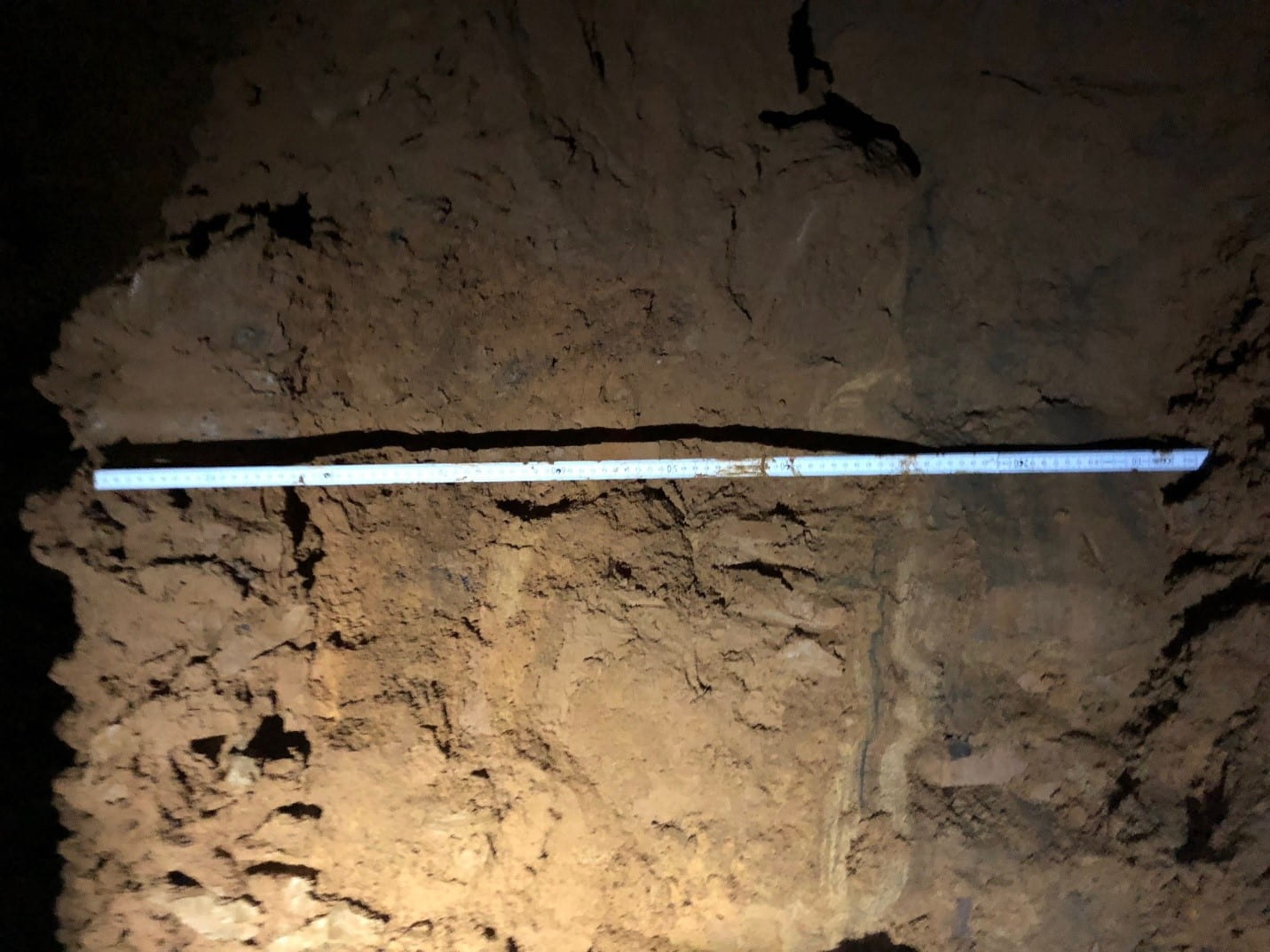Cave Sediments & Hurricanes: Digging into the Past
Puerto Rico is finally starting to recover from Hurricane Maria, but the huge storm may continue to influence the cave and karst systems for generations. A group of PROTECT researchers met in Puerto Rico in July to collect sediment samples from a cave and spring to start addressing this question. Caves can trap and store sediment deposits, creating a long-term record of storms and the injection of surface materials into the caves. One recent study of several caves in Puerto Rico indicated that some sediments have been in place for 3-5 million years![1]
During 2016 (that’s BM, PR slang for “before Maria”), PROTECT researchers collected sediment samples from Tallonal Cave near Arecibo, PR. The owner of this cave stayed put during Maria and tells us that a lot of sediments moved through this cave during the storm. So during July a team visited Tallonal to collect AM (“after Maria”) samples for comparison.
We had an interdisciplinary field team that included PROTECT members plus some volunteer helpers. PROTECT members included UPRM researchers Dr. Ingrid Padilla and Elienisse Rodriguez (PhD student in Civil Env. Engineering) with some extra help from Fernando Pantoja (Postdoctoral Researcher) and Kateleen Vargas (MS student in Geology). The WVU team members included Dr. Dorothy Vesper, Autum Downey (MS student in Geology) and Jill Riddell (PhD student in Geology). For field work we were joined by Dr. Ellen Herman (Bucknell University – specialist on cave sediments) and Brian Smith (Edwards Aquifer Conservation District). Abel Vale (cave owner, ecologist, and CEO of PR’s Citizens of the Karst) graciously welcomed us to his cave and hosed us down when we came out.
We spent half a day in El Tallonal and collected grab samples as well as some vertical cores that preserve the geologic history of the sediments. The process was extremely muddy and wet! We also collected some sediment samples from Maguayo Spring which is instrumented and regularly monitored by the UPRM team.
[1] Miller, T.E., Brocard, G., Willenbring, J.K., 2017. A Chronology of Karstifcation in Puerto Rico Using Cosmogenic Dating of Cave Sediments, 17th International Congress of Speleology, Sydney Australia, pp. 300-303.

The field team preparing sampling devices before going into the cave.

Field team after being in the cave (L to R: Autum Downey, Jill Riddell, Ellen Herman, Dorothy Vesper, Ingrid Padilla, Elienisse Rodriguez, Brian Smith). Photo by Abel Vale.

Sediment column in Tallonal Cave.
